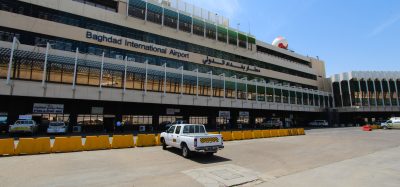Product Showcase: Future-proofing ATC
Posted: 22 January 2019 | HungaroControl | No comments yet
The future of aviation and the related air traffic control and management is being written at an extraordinary rate. HungaroControl’s Simulation HUB was launched to help future proof the aviation industry by making air traffic more efficient, safer, more environmentally friendly, and able to utilise its full capacity.
THE SIMULATION HUB portfolio incorporates seven services: Simulation and validation, airspace design, HMI software ergonomic analysis and design, HMI experimental design and validation, simulation impact assessment, human factor assessment and ATCO training (both refresher and emergency simulation).
Simulation and validation is split into fast-time simulation (FTS) and real-time simulation (RTS), providing a cost-effective way to examine the impact of new aspects on operations and help stakeholders make informed decisions.
The Simulation HUB enables sophisticated multi-agent models to be built and simulated in a fast-time environment, equipping airport staff with a precise picture of the impact of any change. By identifying and removing bottlenecks, the passenger flow, aircraft and ground movement can all be optimised.
Join us live: Shaping the Next Generation of Hold Baggage and Air Cargo Screening
Join us live for an insightful webinar on 11th December at 14:00 GMT, in collaboration with Smiths Detection, as we explore the strategic balance of operational efficiency, regulatory compliance, and sustainability in high-volume security environments.
This session offers a focused look into future-proofing your security strategy.
Key learning points
- Cost Reduction: Strategies to minimize bag travel time while simultaneously reducing operational costs.
- Regulatory Roadmap: Insights into the next wave of regulatory changes and their impact on future investment decisions.
- Sustainable Systems: Practical approaches to building sustainability into security systems and lowering the total cost of ownership (TCO).
- Scalable Solutions: Real-world examples of scalable systems supporting current airport growth and preparing for tomorrow.
Register now for expert insights, case studies, and actionable strategies on operational efficiency!
To provide some further examples, simulation impact assessment addresses the impact and risk assessment of safety, efficiency and capacity related indicators. There is a focus on user acceptance and confidence and this service incorporates the measurement of key simulation parameters.
Airspace design involves the optimisation of new airspace, sector configurations and new departure, arrival and holding procedures. Airspace design also incorporates modernisation of the airspace. For an airspace design project, a CONOPS (Concept of Operations) is first created with the client. Based on the validation plan – which contains the CONOPS – the airspace is modelled with a FTS software at accelerated speed, which provides opportunity to test various scenarios.
HungaroControl records all relevant parameters that are customised for the operational environment (fuel burn, occupancy, duration and distance of the flight, duration and number of passengers served, etc.). The most promising scenarios can be selected for the RTS validation exercises which are used to validate new operational concepts with the contribution of air traffic controllers proficient in the measured airspace.
In order to create realistic and high-fidelity scenarios, HungaroControl offers the clients the opportunity to use the HMI of their ‘home’ ATM system reproduced by the simulation developer. The validation methodology is in line with the European Operational Concept Validation Methodology (E-OCVM) and the results of the validation exercises are analysed by the human factors analysts. Human-in-the- loop parameters such as objective data (e.g. the number of coordination events, ATM tool usage, short-term conflict alerts) and subjective feedback through generic and simulation-specific questionnaires are gathered during the simulation.
Human factors assessment incorporates validation to ensure that all tested change will support human capabilities and minimise human error. During this validation, continuous support is given throughout the analysis of objective and subjective data. Debriefing sessions with subject matter experts are also given, along with a full programme of change management.
HungaroControl will be attending the 2019 World ATM Congress in Madrid and the ATC Forum at the Airport Show 2019 in Dubai, and welcomes anyone who is interested in the Simulation HUB platform to visit the HungaroControl facility and meet the simulation team.
Stay Connected with International Airport Review — Subscribe for Free!
Get exclusive access to the latest airport and aviation industry insights from International Airport Review — tailored to your interests.
✅ Expert-Led Webinars – Gain insights from global aviation leaders
✅ Weekly News & Reports – Airport innovation, thought leadership, and industry trends
✅ Exclusive Industry Insights – Discover cutting-edge technologies shaping the future of air travel
✅ International Airport Summit – Join our flagship event to network with industry leaders and explore the latest advancements
Choose the updates that matter most to you.
Sign up now to stay informed, inspired, and connected — all for free!
Thank you for being part of our aviation community. Let’s keep shaping the future of airports together!
Issue
Related topics
Air traffic control/management (ATC/ATM), New technologies, Recruitment and training, Safety


















